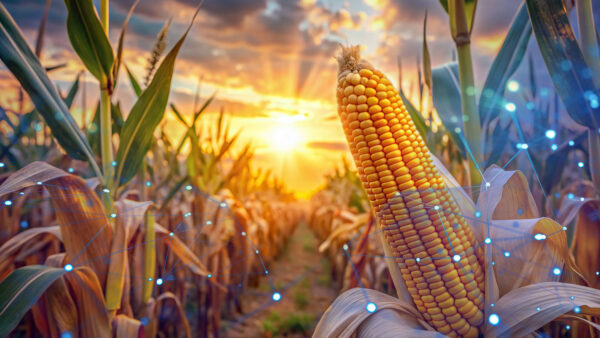Wild relatives help preserve diversity for future plant breeding needs.
Crop wild relatives have evolved over millions of years, adapting to the environments in which they live in, making each population unique. When it comes to plant breeding, they’re an important source of genes to manage future stressors that face crop plants. This includes drought, new fungal pathogens and additional challenges that the world must combat due to climate change.
“When you consider plants collected from different areas in the world, they have evolved to adapt to that specific environment. That’s what makes them really useful for plant breeders,” says Alan Humphries, curator of the Australian Pastures Genebank, on the Feb. 8 episode of Seed Speaks.
Wild relatives have proven just how valuable they can be time and time again in the past. For example, the U.S. wild grape relative is utilized as a root stock to offer resistance to phylloxera for cultivated grapes. Lettuce’s Lactuca serriola, also known as prickly lettuce, provides resistance to downy mildew and were used to breed resistant varieties of head lettuce. Another wild species of lettuce, Lactuca virosa, gives cultivated lettuce resistance to lettuce aphid, according to Barbara Hellier, horticulture crops and Beta curator with the Western Regional Plant Introduction Station.
“We’ve utilized wild relatives in the past for plant breeding. We don’t know what we’re going to be facing in the future, so they’re part of our insurance policy for food security,” she says.
While wild relatives bring that necessary diversity back into the equation for plant breeders, it isn’t always easy to make that breeding process successful and produce the desired outcome.
“There are a lot of barriers and challenges to using wild relatives. Sometimes, purely biological crosses between a wild relative and crop plant do not produce fertile offspring. Maybe the number of chromosomes is different in the two species. Maybe embryos will initially form but are not able to mature to a ripe seed. So, there’s biological barriers of that type,” explains Pat Byrne, plant geneticist in the Department of Soil and Crop Sciences at Colorado State University.
In addition to the multitude of biological barriers, agronomic challenges create another roadblock for breeders with wild relatives. Since wild relatives are very well-adapted to their natural habitat, the downside is that they might not contain the traits breeders are searching for in a cultivar — for example, they could be poor yielding or maintain a different maturity. In response to these various challenges, breeders have introduced the utilization of bridge species and DNA markers, says Byrne.
“Rather than making a direct cross between a wild relative and a crop plant — like a wild relative of wheat and bread wheat — you would make an intermediate cross initially. That intermediate product would be more easily crossed to wheat than going directly from the wild to the cultivar. There are some ways of getting around the challenges. The use of DNA markers is a way that breeders can pinpoint more precisely what the genes are that they would like to bring in from the wild species, rather than incorporating the whole genome,” he adds.
Humphries has first-hand experience with the successes and tribulations related to breeding with wild relatives through his work with Crop Trust’s Biodiversity for Opportunities, Livelihoods and Development (BOLD) program. The project is dedicated to supporting livelihoods of smallholder farmers with biodiversity. Humphries took part in a specific project that focused on the identification of alfalfa seeds collected from places such as the Arctic Circle to across the globe in the Mediterranean’s hottest environments.
“We imported the seeds, characterized their diversity and tried to understand what makes them unique,” explains Humphries of the project.
The seeds were then conserved in the Australian Pastures Genebank and the Svalbard Global Seed Vault in Norway as experts worked to uncover how the diversity within these seeds could benefit smallholder farmers in the environments of Kazakhstan, China and Chile.
“Our climate is changing, and we can no longer rely on favorable weather conditions to produce food. We need plants that are adapted to survive — they still need to produce food, but in tougher conditions. This theory is backed up by the fact that when we grew this wild diversity, we made crosses with modern plant varieties. The new hybrids that we developed in this project actually created new diversity that we hadn’t seen before. That’s how they can be really useful,” he concludes.









